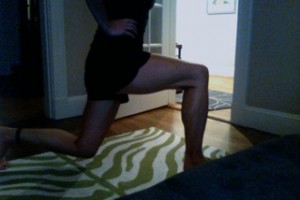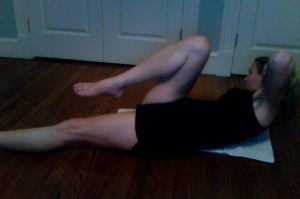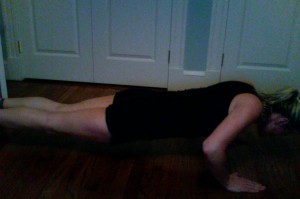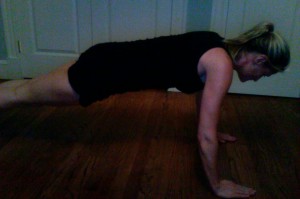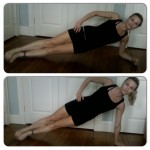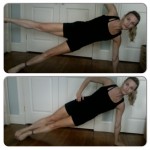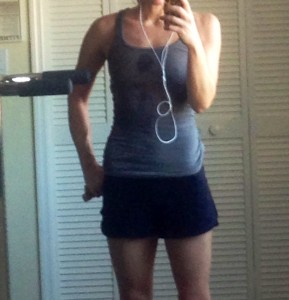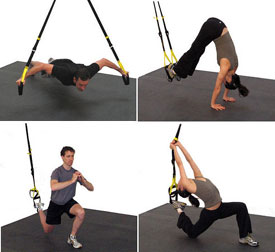As always, please check with your healthcare provider if you have any specific healthcare needs, and to make sure that you can partake in this challenge. You can always feel free to add or omit weights based upon your personal fitness levels. And before and after pictures are always a plus so we can see how much we’ve all improved our form!
Since I haven’t posted an exercise challenge in a couple of months, and we have been left to our own devices, I’m going to start it slow, and use some exercises we have done in the past, change-up a few, and then add some new stuff in! Get excited, and get ready to kick up your exercise and get ahead to prevent that dreaded holiday bulge! This month we will be working on our core abs, hips, and legs, to keep strong and feeling good heading into the holiday season.
Kick lunges work your quadriceps, hamstrings, gluteals, and calves. From and standing position, legs hip width apart, start by lunging backwards with your left leg until your right thigh is parallel with the ground, then rise up and kick your left leg out in front of you (hip height), return to the standing position, then repeat on the other leg.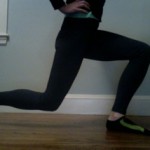
Side leg lifts work your abductor, AKA hip, muscles (can be made more challenging with a resistance band or ankle weights). Lay on your side with the leg you are laying on bent at a 45-degree angle, with your upper arm on the ground, bend your elbow and rest your head in your hand. Keep your top leg straight, and lift it directly up to hip height, then slowly bring it back down to the resting position, switch sides. 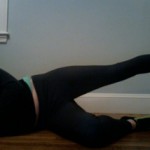
Back Kicks (or Donkey Kicks) work your core abdominal muscles and your gluteals (can be made more challenging by adding a resistance band or ankle weights). Rest on your hands and knees, slowly kick one leg back until it is straight back until it is hip height, then slowly bring your knee into your chest, then down to resting position, switch sides. 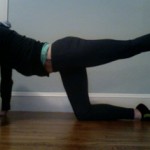
Day 1: Kick Lunges (KL) 10 on each leg and Side Leg Lifts (SLL) 15 on each leg
Day 2: KL 15 on each leg and SLL 20 on each leg
Day 3: KL 20 on each leg and SLL 25 on each leg
Day 4: KL 25 on each leg and SLL 30 on each leg
Day 5: KL 30 on each leg and SLL 40 on each leg
Day 6: KL 35 on each leg and SLL 45 on each leg
Day 7: REST Day!!
Day 8: KL 40 on each leg and SLL 50 on each leg
Day 9: KL 50 on each leg and SLL 60 on each leg
Day 10: KL 60 on each leg and SLL 70 on each leg
Day 11: KL 70 on each leg and SLL 80 on each leg
Day 12: KL 80 on each leg and SLL 90 on each leg
Day 13: KL 90 on each leg and SLL 100 on each leg
Day 14: REST Day!!
Day 15: KL 100 on each leg and Back Kicks (BK) 20 on each leg
Day 16: KL 110 on each leg and BK 20 on each leg
Day 17: KL 120 on each leg and BK 40 on each leg
Day 18: KL 130 on each leg and BK 60 on each leg
Day 19: KL 140 on each leg and BK 80 on each leg
Day 20: KL 150 on each leg and BK 100 on each leg
Day 21: REST Day
Day 22: KL 100 on each leg, BK 20 on each leg, and SLL 50
Day 23: KL 110 on each leg, BK 20 on each leg, and SLL 50
Day 24: KL 120 on each leg, BK 20 on each leg, and SLL 50
Day 25: KL 130 on each leg, BK 20 on each leg, and SLL 50
Day 26: KL 140 on each leg, BK 20 on each leg, and SLL 50
Day 27: KL 150 on each leg, BK 20 on each leg, and SLL 50
Finished! You are looking better, feeling better, have a stronger core and leg muscles, and are ready to continue to dodge that holiday bulge throughout December! Strong core, gluteal, and leg muscles help to stabilize us and make us actually feel stronger. Keep up the good work! And join our Facebook Fitness Challenge page to get added tips, ask questions, and cheer each other on!
Yours in Good Health
B


